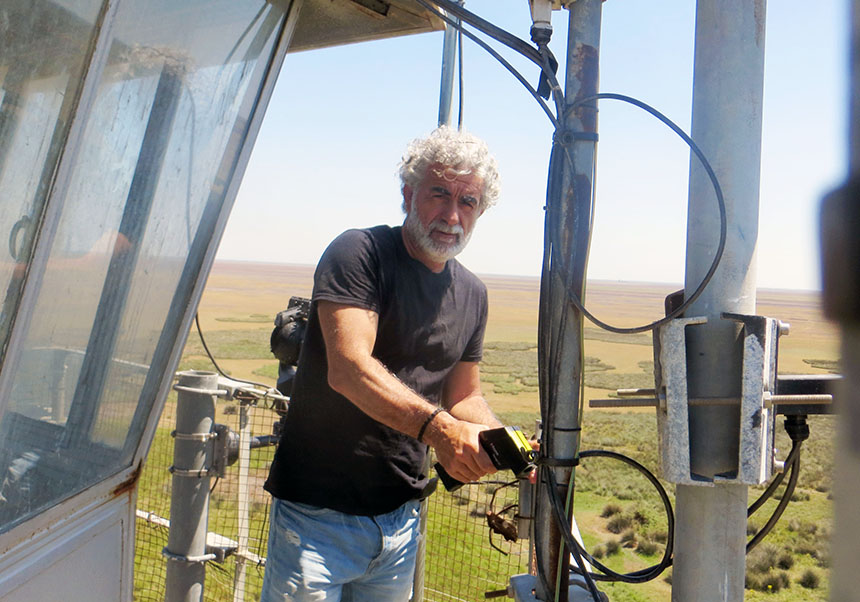
Professor of Earth Physics at the University of Valencia José Antonio Sobrino will lead, alongside the multinational company Thales Alenia Space, the consolidation study for the European Space Agency’s (ESA) SIRIUS mission. This project, carried out by an international consortium, aims to analyse the impact of urban heat islands on the local climate of cities.
In a global context marked by climate change and accelerated urban growth, urgent challenges arise for urban resilience and environmental sustainability. The increase in urban heat islands – areas within cities that experience elevated temperatures, particularly at night, due to heat accumulation, scarce vegetation and human activity – is affecting public health and psychological wellbeing, as well as daily habits and economic dynamics.
By 2050, it is expected that two-thirds of the world’s population will be living in urban environments, which could exacerbate existing vulnerabilities and, according to experts, generate new threats to health, the environment and wellbeing, especially if this growth occurs without adequate planning. Access to accurate information about land surface temperatures in urban areas, through regular heat mapping, will help us understand this phenomenon, which is essential for urban planning decisions and the development of effective climate policies.
The consolidation study for the SIRIUS mission (Space Based Infra-Red Imager for Urban Sustainability) is aimed at observing European cities from space using thermal infrared (TIR) products to measure the temperature of objects remotely. The objective is to understand how urban heat islands modify the local climate.
The European Space Agency has awarded the project to an international consortium led by Thales Alenia Space in Spain. José Antonio Sobrino, professor of Earth Physics at the University of Valencia, will be the scientific leader of the mission.
Innovative Solution to Monitor Heat Islands from Space
The SIRIUS mission is part of the Scout missions of the ESA’s FutureEO Earth observation programme. Its approach of rapid development, high resolution, scalability and low cost is based on the Smart-TIRI instrument – an innovative, compact, high-performance and cost-effective technology developed by the Spanish subsidiary of Thales Alenia Space, the mission’s main contractor.
Thales Alenia Space Spain leads the consortium that will work on the ESA mission, which also includes the Lithuanian company Kongsberg Nano Avionics – responsible for the small satellite platform –, Thales Alenia Space France, which will conduct mission analysis and support simulator development and image quality activities, and the Spanish National Institute for Aerospace Technology (INTA), in charge of defining the performance simulator. As scientific leader of the project, José Antonio Sobrino will play a crucial role in defining and refining the scientific objectives of the mission.
José Antonio Sobrino is professor of Earth Physics, head of the Global Change Unit (UCG) and director of the Image Processing Laboratory (IPL) at the University of Valencia. As an Earth physicist specialising in remote sensing, his lines of research focus on studying planetary changes using satellite remote sensing and digital image processing. He has published over 300 papers in high-impact scientific journals, has served as principal investigator on more than 70 projects funded by Spain, the European Union (EU) and the European Space Agency (ESA), and has supervised 25 doctoral theses.
In 2019, he was awarded the Jaume I Research Prize in the Environmental Protection category for his work on planetary change and the development of algorithms to calculate the temperature of the Earth's surface and oceans.
He has been president of the Spanish Remote Sensing Association and is a member of the Advisory Group for ESA’s LSTM mission, a member of the scientific committee for the Franco-Indian TRISHNA mission, editor-in-chief of the international journals Recent Advances in Remote Sensing and Remote Sensing Communications, coordinator of the Spanish National Earth Observation Network (RNOT), founding president of the international symposium series “Recent Advances in Quantitative Remote Sensing” and scientific member of the High Advisory Council for R&D&i of the Valencian Community, the body that advises the regional government on research, development and innovation, among other positions.








